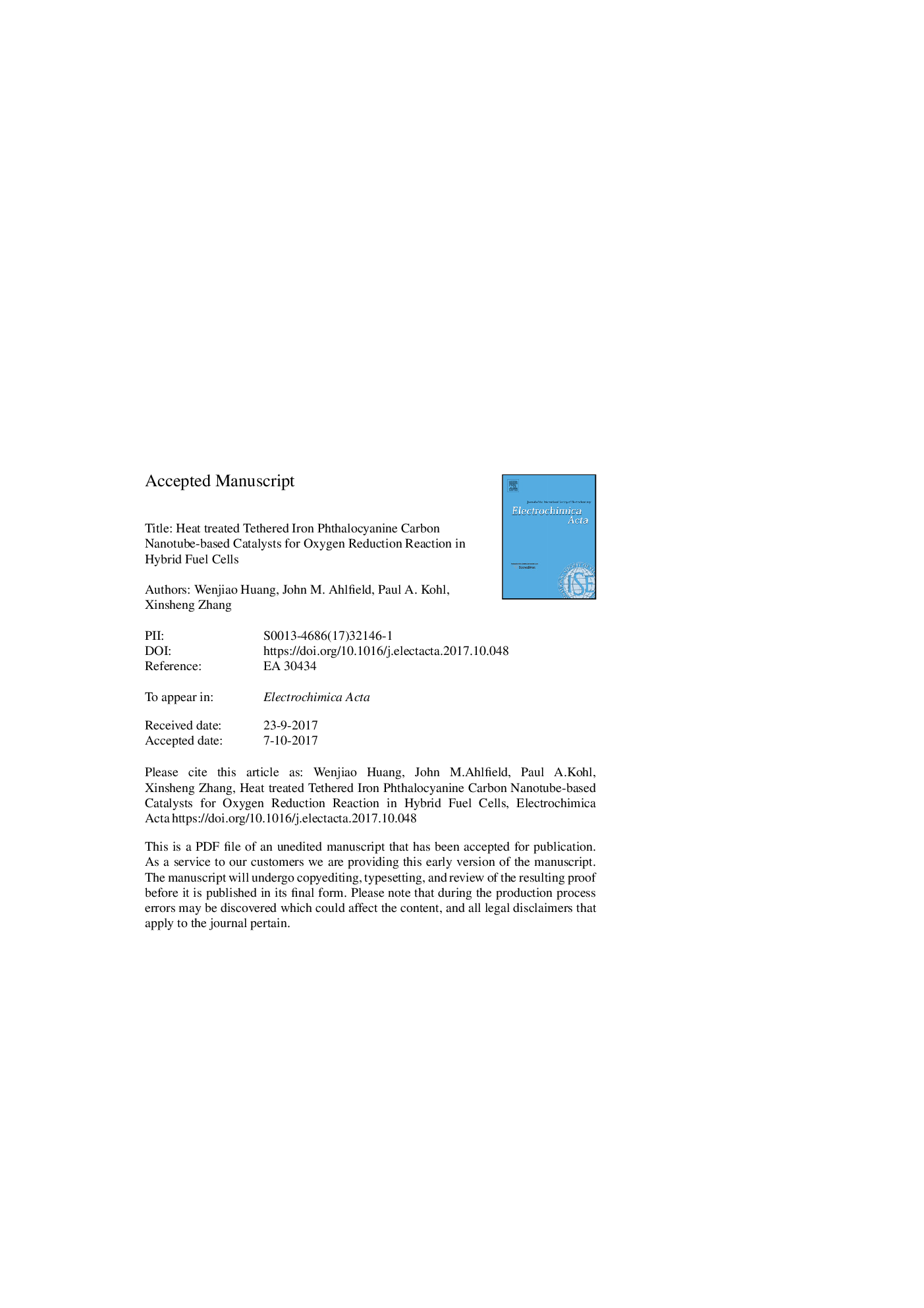| Article ID | Journal | Published Year | Pages | File Type |
|---|---|---|---|---|
| 6605324 | Electrochimica Acta | 2017 | 41 Pages |
Abstract
A heat-treated iron phthalocyanine with an axial ligand anchored on carbon nanotubes (P-FePc-py-CNT) was synthesized and evaluated in hybrid H2/O2 fuel cells. Carbon nanotubes were used as the support for iron phthalocyanine with heat treatment (P-FePc-CNT), nitrogen-doped carbon nanotubes were used as the support for iron phthalocyanine with heat treatment (P-FePc-CNTN), and pyridine axial ligand functionalized carbon nanotubes were used as the support for iron phthalocyanine without heat treatment (FePc-py-CNT). Each sample was compared with P-FePc-py-CNT in a hybrid H2/O2 fuel cell. The pyridine-functionalized carbon nanotubes (py-CNTs) were synthesized through diazonium reaction while the nitrogen-doped carbon nanotubes (CNTN) are synthesized by thermal annealing approach. The functionalization of CNTs of the catalysts was investigated by Raman spectroscopy. The existence of nitrogen functional groups on carbon nanotubes and the type of functional groups after pyrolysis was confirmed by x-ray photoelectron spectroscopy (XPS). The thermogravimetric analysis (TGA) results showed that the Fe content in the catalysts was about 7 to 9Â wt%. The P-FePc-py-CNT was found to perform best among the non-noble catalysts while the P-FePc-CNTN was unstable in a hybrid H2/O2 fuel cell. The results suggest that adding an axial ligand on the back side of FePc before heat treatment can facilitate the oxygen reduction reaction.
Related Topics
Physical Sciences and Engineering
Chemical Engineering
Chemical Engineering (General)
Authors
Wenjiao Huang, John M. Ahlfield, Paul A. Kohl, Xinsheng Zhang,
